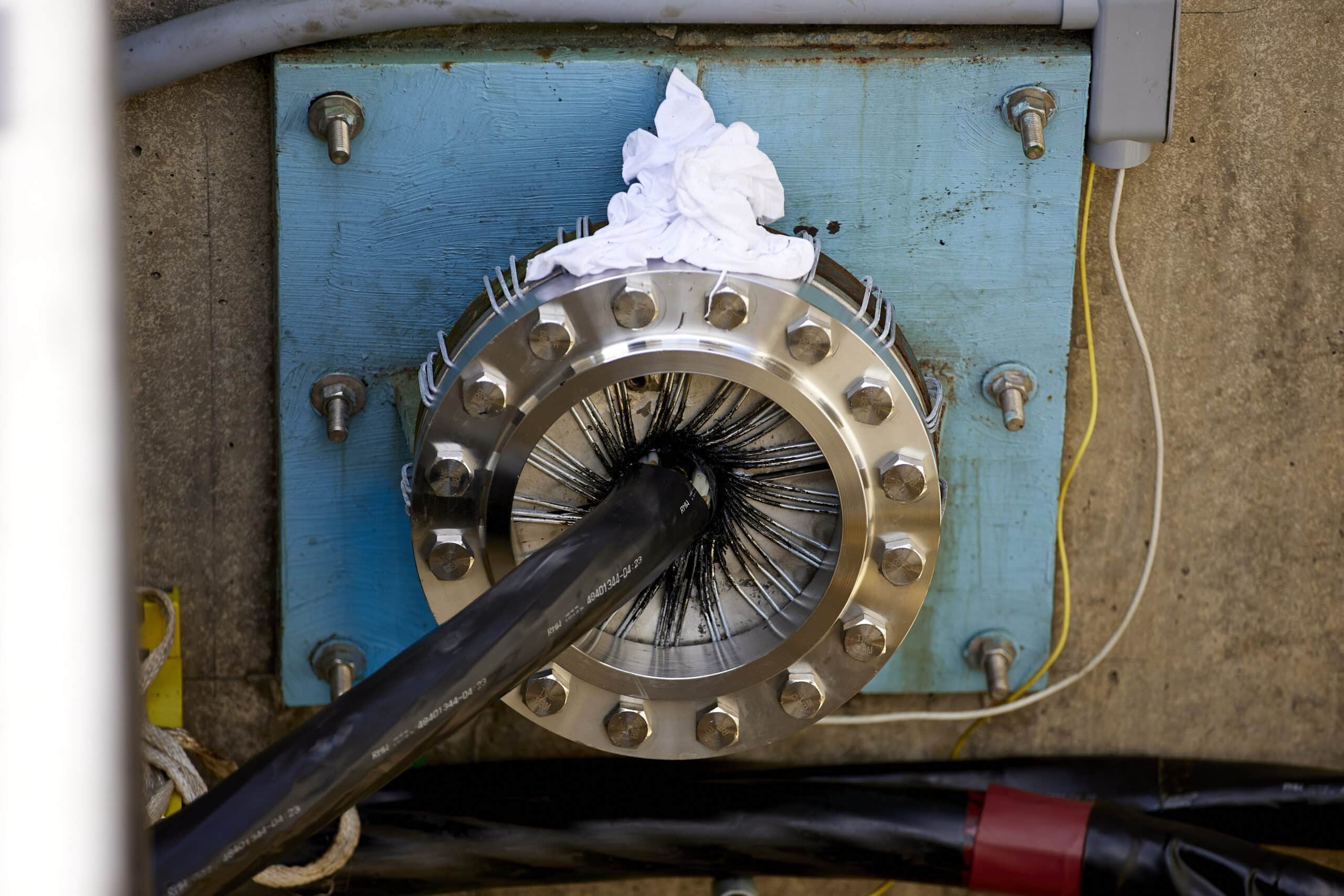



Concrete vaults under the parking lot at Driftwood State Beach where subsea cables connected to the wave energy test site arrive on land and connect to land cables in Newport, Ore., Friday, Aug. 23, 2024. (AP Photo/Craig Mitchelldyer)
Paris, France — The world’s data and communications are carried across oceans by great bundles of subsea fiber optic cables — with their high strategic value making them potential targets for attack. Most recently, Sweden and Finland have opened investigations into potential “sabotage” against cables damaged on Sunday and Monday in the Baltic Sea.
98 percent of digital dataUndersea cables ferry data of all kinds between the continents, “transmitting everything from streaming videos and financial transactions to diplomatic communications and essential intelligence” according to a recent report from the US-based Center for Strategic and International Studies (CSIS).
The links can carry “vast amounts of information, and especially a lot more than Elon Musk’s SpaceX satellites,” said Eric Lavault, a French navy officer formerly charged with control of the sea floor.
READ: Germany sees ‘sabotage’ as Sweden says second sea cable cut
Undersea fiber optic cables transport “98 percent of global digital data,” he added.
Around 450 undersea cables are currently in operation worldwide, Lavault said, with CSIS saying they stretch for around 1.2 million kilometers.
Dozens more are in the planning stage.
Most countries with a coastline have at least one, according to a map from TeleGeography, a US-based firm specializing in telecoms data analysis.
Only a few rare corners of the Earth such as Eritrea, North Korea and Antarctica are without subsea links.
Private linksSubsea cables may be of enormous strategic value, but they are “built, owned, operated and maintained primarily by private sector companies”, CSIS notes.
In 2021, US firm SubCom, France’s ASN and Japan’s NEC together accounted for 87 percent of the market, with China’s HMN ranking fourth with 11 percent.
Lavault noted that digital giants like Google, Amazon and Microsoft “are developing their own cables” in a sign they are “a massive economic prize”.
What’s more, the demands on cables’ bandwidth are only set to increase with “the development of AI, which can only be nourished with the data people cram into it,” he added.
Sabotage targetSubsea cables “very regularly” suffer incidents that can cut traffic, Lavault said, with culprits ranging from underwater landslides to tsunamis or just boats “dropping anchor where they shouldn’t”.
“In 80 percent of cases, damage to cable is not purposeful,” he added.
Nevertheless, deliberate sabotage or espionage attempts are also far from unknown.
“We know that these undersea cables can be targeted by countries tempted to surveil or damage this infrastructure,” France’s then-defense minister Florence Parly said in 2022.
According to Danish press reports, the US listened in via Denmark’s subsea network on communications from four countries — Germany, Sweden, Norway and France — between 2012 and 2014, including then-chancellor Angela Merkel.
“The strategic importance of undersea cables has not been lost on Russia, which views this infrastructure as a critical point of leverage against the security of Western nations,” according to the CSIS report.
The Yantar, a Russian military oceanography vessel, has been spotted several times near transatlantic cables off the Irish coast in recent years.
It is capable of deploying miniature submarines able to reach depths of 6,000 meters (20,000 feet).
“Data is an extremely important commodity these days,” Lavault said.
Countries are increasingly in a position to attack each other’s “new vital interests like the internet, which has direct effects on civil society and the economy,” he added.
Subscribe to our daily newsletter